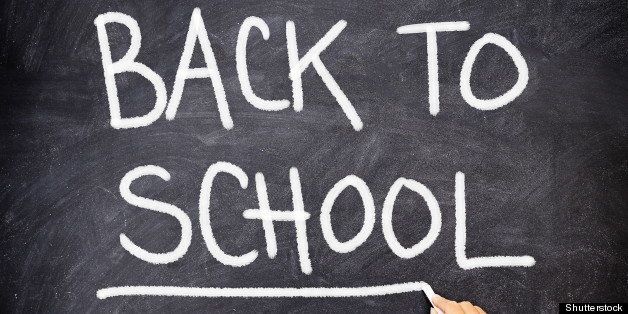
Back-to-school spending has gone far beyond the last minute, discount-store rush for pens, pencils and paper that many of us remember as kids. But it often still starts with traditional expenses like clothes, shoes, school supplies and books - and the added latest digital technology. In 2014, Forbes reported that Accenture estimated that nearly half of respondents reported they would spend $500 or more on back-to-school expenses.
Yet there's one more aspect of back-to-school spending that can add hundreds - and sometimes thousands - to a family's overall education budget. According to the Wall Street Journal, since the 2008 economic crisis, many public school systems have tried to make up for funding shortfalls by adding first-time or expanded fees for sports, extracurricular activities and even specialized academics.
This means that for many families, back-to-school can be a much bigger expense than ever before. Dealing with it effectively means much more focused year-round planning, research, budgeting and above all, an eye for bargains. Here are a few tips:
Focus on fees first. Public education isn't completely free of charge beyond local taxes - parents typically kick in extra money to support their kids' participation in sports, music or other extracurricular activities. However, many school systems are adding fees for a broader range of offerings including after-school activities, top-level courses, lab-based instruction and Advanced Placement (AP) classes. So before you start spending money on clothes and supplies that can be bought off-season, on sale or possibly used, get a handle on how these often non-negotiable instruction and activity fees might affect your budget. You might qualify for aid or grants to cover them; if not, choices will need to be made.
Involve the kids. No matter how young school-aged children are, back-to-school season is a great opportunity to teach essential money lessons. Most kids like to have certain kinds of clothes, shoes or supplies. That gives you a chance to introduce lessons about spending priorities, value, choice and how comparison shopping in stores or online can help get more for less. Using the Back to School Budget calculator with your kids can help them learn how to budget before shopping for supplies. As kids get older, the discussion can expand to include how to afford bigger-ticket purchases like smartphones, computers and fees for special activities and coursework. Some parents and kids may negotiate ways for kids to pay for some of these items, including chores around the house and part-time jobs.
Track every school-based expense. Don't stop at school fees, clothing and school supplies. Consider every potential school-related cost including meals, tutoring and healthcare expenses that may not be covered by insurance. After-school transportation to activities and events should also be recorded.
- Car pooling (track your costs to make sure you're not adding significantly to your overall transportation budget)
- Working with school administrators to raise outside donations or grant funding for programs that parents would otherwise have to pay for
- Packing lunches at home
- Organizing school supplies in one place to avoid purchasing duplicates
- Renting equipment, supplies or instruments until a child's interests are established
- Scouting garage sales, thrift shops and online marketplaces for used, required-edition textbooks, instruments, electronics, sports equipment, clothes and other supplies you'd otherwise buy new; look for online resources that don't charge shipping or return fees
- Buying school supplies and services in bulk or with other parents to get volume prices
- Consolidating back-to-school shopping during tax-free days (if your state offers them)
- Swapping used supplies and equipment with other parents
- Checking retail memberships for any back-to-school savings they offer
- Watching for print and online coupons
- Listening to your kids - they might spot money-saving ideas faster than you can
One final back-to-school budget item - rewards for your kids' success. Whether it's a great report card or a school title, consider setting aside a little of those savings for a reward they can enjoy.
Bottom line: Primary and secondary school costs are on the rise, which makes back-to-school planning more essential than ever.
Nathaniel Sillin directs Visa's financial education programs. To follow Practical Money Skills on Twitter: www.twitter.com/PracticalMoney
